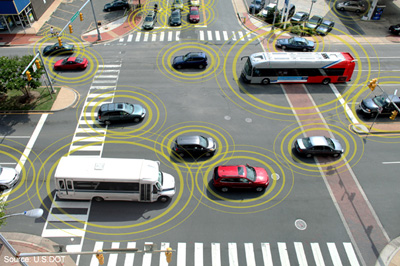V2V/V2I mandate may be dropped, the good and the bad
Submitted by brad on Thu, 2017-11-02 11:21Rumours are swirling that the US Federal government will drop the proposed mandate that all new cars include a DSRC radio to do vehicle to vehicle communications. Regular readers will know that I have been quite critical of this mandate and submitted commentary on it. Whether they listened to my commentary, or this is just a Trump administration deregulation, it's the right step.




 The second class of applications are "V2I" which means a car talks to the road. This can be used to know traffic light states and timings, get warnings of construction zones and hazards, implement tolling and congestion charging, and measure traffic.
The second class of applications are "V2I" which means a car talks to the road. This can be used to know traffic light states and timings, get warnings of construction zones and hazards, implement tolling and congestion charging, and measure traffic.